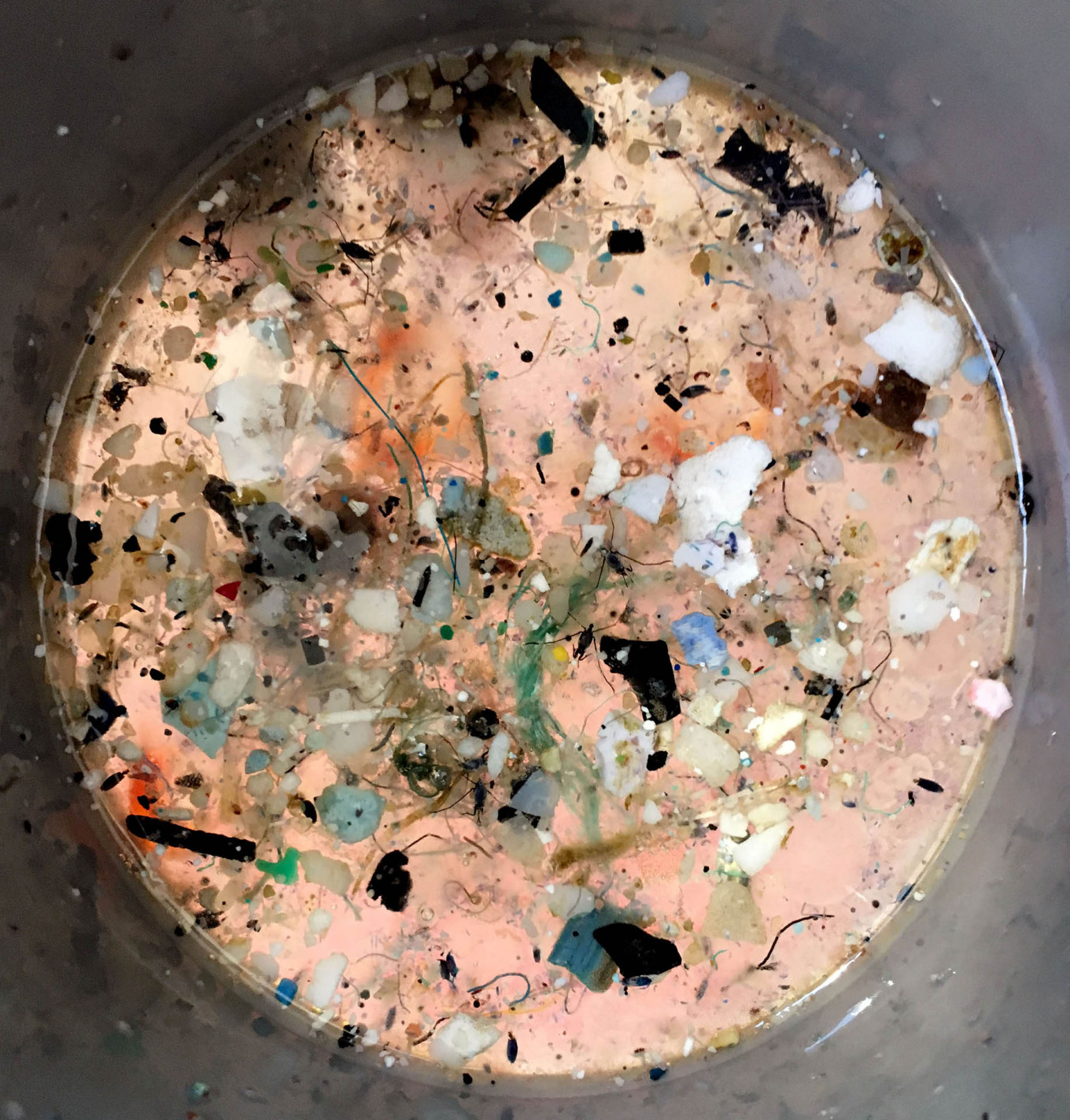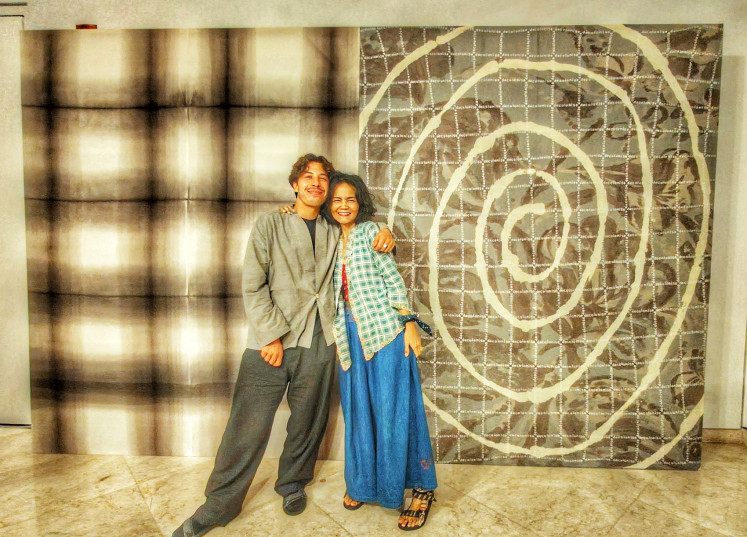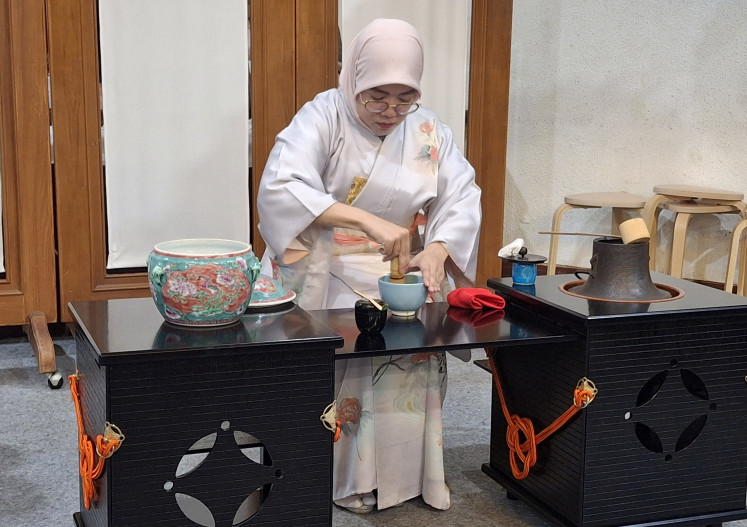Popular Reads
Top Results
Can't find what you're looking for?
View all search resultsPopular Reads
Top Results
Can't find what you're looking for?
View all search resultsFrench photo exhibition captures the horrors of pollution
The Contamination exhibit addresses cases of irredeemable industrial pollution that over decades and even centuries have turned land into areas unfit for living beings.
Change text size
Gift Premium Articles
to Anyone
 'Tears of the Sirens', found in the largest polluted area of the Northern Pacific Ocean. Each year, at least 8 million tons of plastic are thrown into the oceans, many of which are mistaken for plankton and consumed by fish. The plastic can eventually enter our food cycle and make its way onto our plates. (Samuel Bollendorff/Samuel Bollendorff)
'Tears of the Sirens', found in the largest polluted area of the Northern Pacific Ocean. Each year, at least 8 million tons of plastic are thrown into the oceans, many of which are mistaken for plankton and consumed by fish. The plastic can eventually enter our food cycle and make its way onto our plates. (Samuel Bollendorff/Samuel Bollendorff)
S
amuel Bollendorff is a well-known French photographer and documentary filmmaker who in 2011 became the president of Agence VU in Paris. His approach to photography and film is primarily social-humanitarian, whether addressing aspects of life in France or abroad.
Winner of many awards for his journalistic reporting, Bollendorff continues to be funded by print publications such as Le Monde, audio-visual institutions and festivals like Visa pour l’Image, as well as various foundations.
Bollendorff is also supported by the nonprofit association Pour Que l’Esprit Vive, which focuses on finding solutions to urgent social problems. It is this association that runs the Galerie Fait & Cause, 58 Rue Quincampoix in Paris where the show runs until Feb. 23.
At the opening, Bollendorff explained, “For 2018, I chose to travel the Earth. It is a small planet and can be covered in a matter of hours. Wherever I have looked I have seen darkness: a river, dead, over a distance of 650 kilometers, deformed fish, radioactive forests, children born with no eyes, the mafia dealing in toxic waste, plastic adrift in the ocean forming particles that are now part of a grotesque food chain. How have we let this happen?”
Based on his 2018 travels, Bollendorff focused on the pollution of natural resources around the globe, discovering that our forests, soil, oceans and even the air we breathe are polluted — which contradicts the first impression we may have of a particular area still being pristine.
This harrowing photo reportage was produced together with Le Monde, which printed 22 pages of Bollendorff’s work during the Visa pour l’Image festival last year. The traveling costs were funded by Fondation Tara Expeditions. Then, ICADE corporation contributed to coproducing the actual exhibition in Paris.
The Contamination exhibit addresses cases of irredeemable industrial pollution that over decades and even centuries have turned land into areas unfit for living beings. Entire swathes of the Earth have been fouled by humans in chemical, mining or nuclear industries for generations to come.
Read also: Fighting plastic pollution through small steps
'Mother Nature' : On the edge of once-pristine waters, bituminous toxic sands resulting from petrol foraging pollute the surroundings in Alberta, Canada. (Samuel Bollendorff/Samuel Bollendorff)One example is Alberta in Canada. Due to industrial drilling for petrol in Alberta, toxic bituminous sands proliferate, rendering the surroundings unfit for human beings. Inhabitants of the area once lived on the edge of the water, where trees were green and the water blue. When the drilling for petrol began, even the snow turned yellowish grey, animals began to die, birds did not fly like before and fish were deformed. Humans also began to suffer from various cancers.
Another example is how insoluble plastic enters the food chain in the oceans. Fish mistake microscopic plastic balls for plankton and it enters their digestive system. Many will die instantly, but for others, it continues down the food chain eventually enters the human digestive system. We only have to visualize Bollendorff’s image Tears of Sirens to understand what horrors are present in the Pacific Ocean where the biggest concentration of plastic in global oceans is found.
Anniston, Alabama, in the United States was once 'the model city' but is now referred to 'the toxic town' after 20,000 inhabitants were driven out by Monsanto pollution. (Samuel Bollendorff/Samuel Bollendorff)Worse still is the town of Anniston in Alabama, the United States, where the Monsanto chemical industrial plant between 1927 and 1971 produced so much chemical refuse that was discharged into the waterways or open-air dumps and poisonous gases that were ejected into the air, the 20 000 inhabitants fled this former model city-turned “toxic town”. They left hundreds of ruined houses behind them.
Although this may seem to be a highly simplified approach to the intricacies of the photo show, it should awaken the viewers’ conscious to the perils of toxic industrial waste. (kes)












